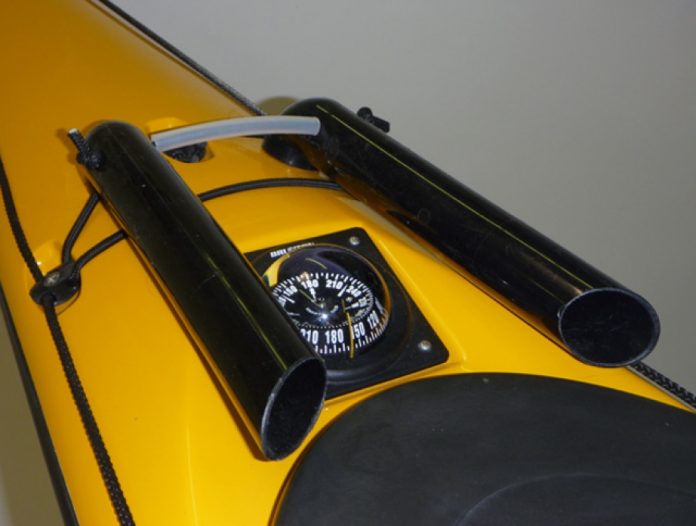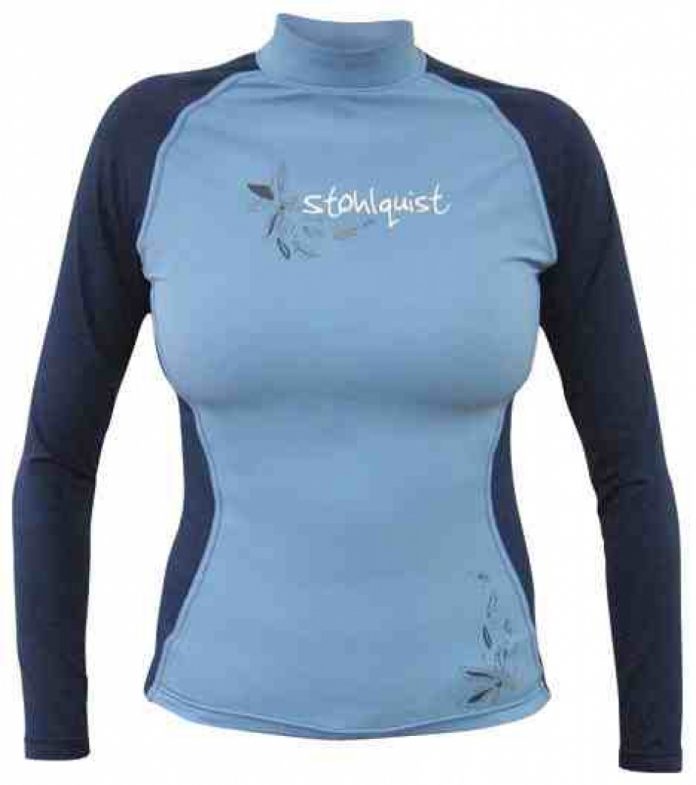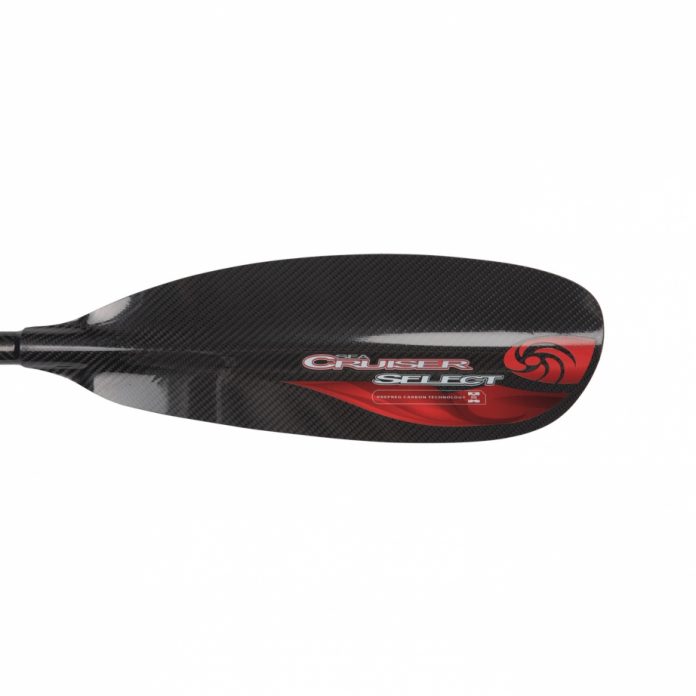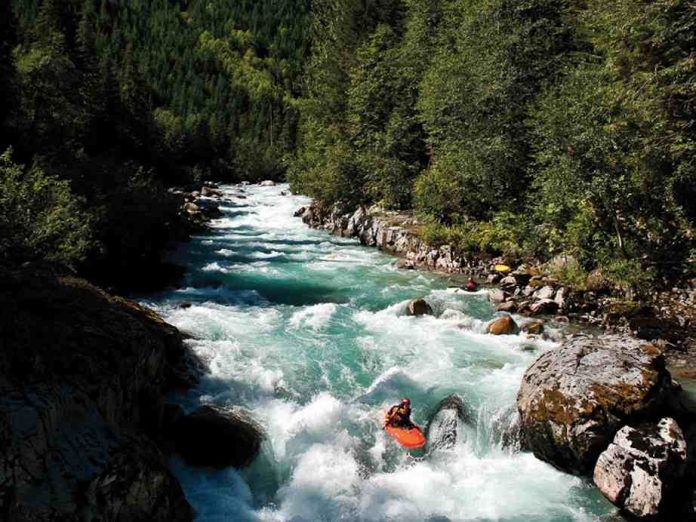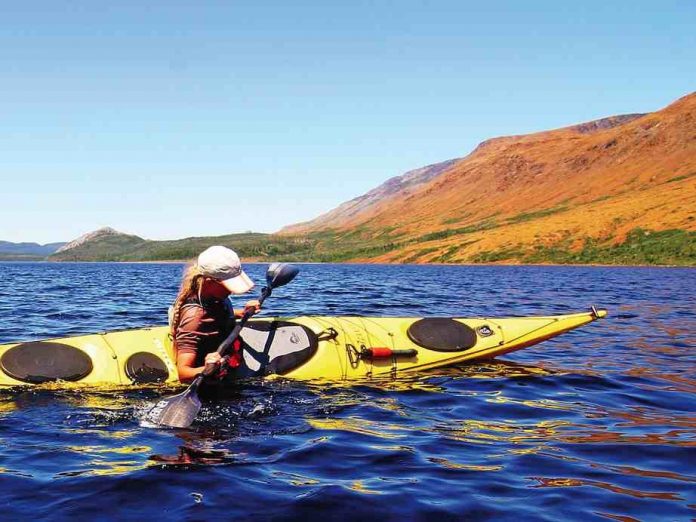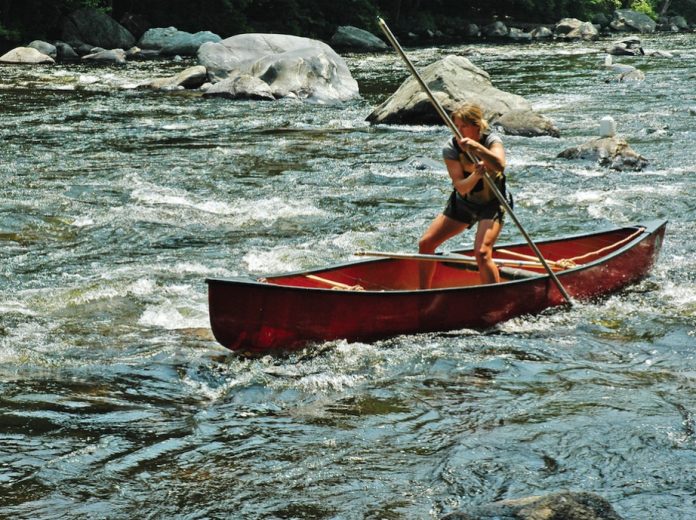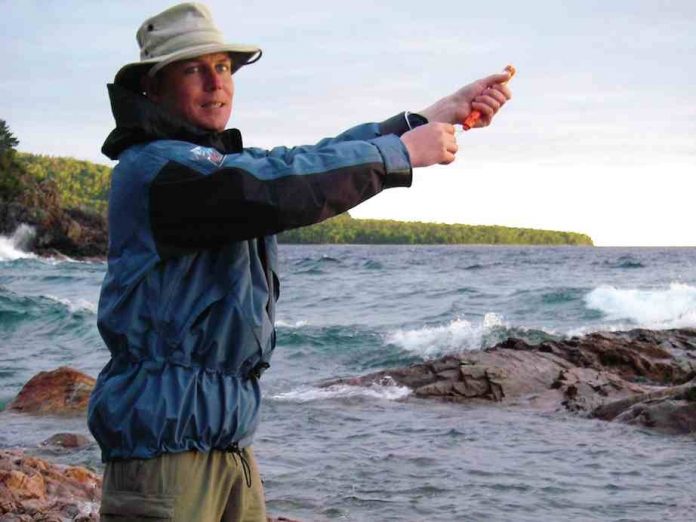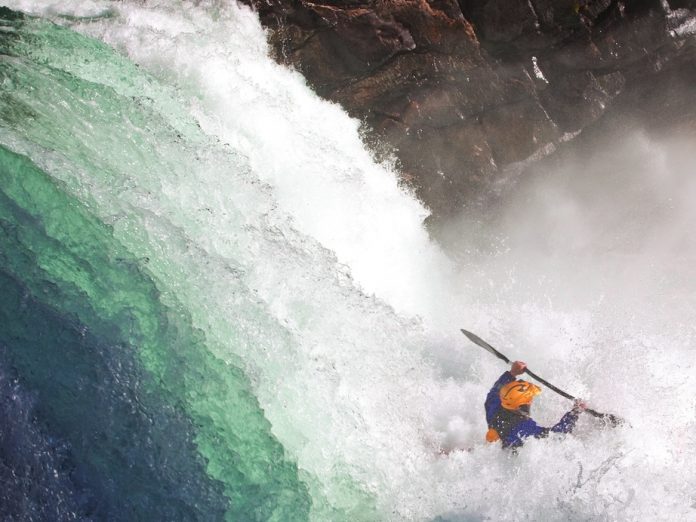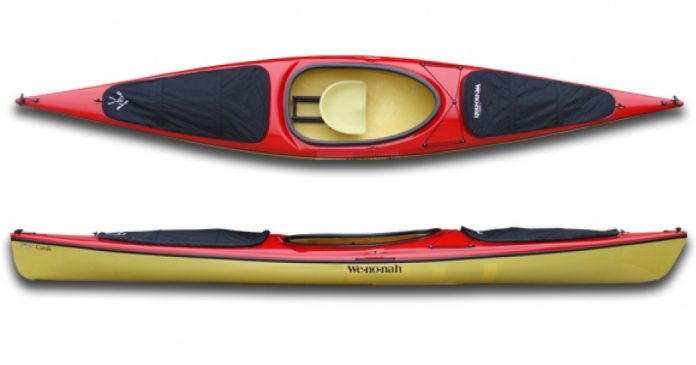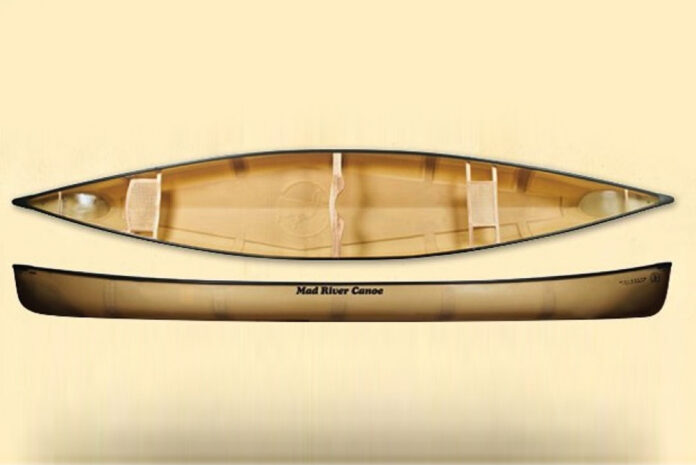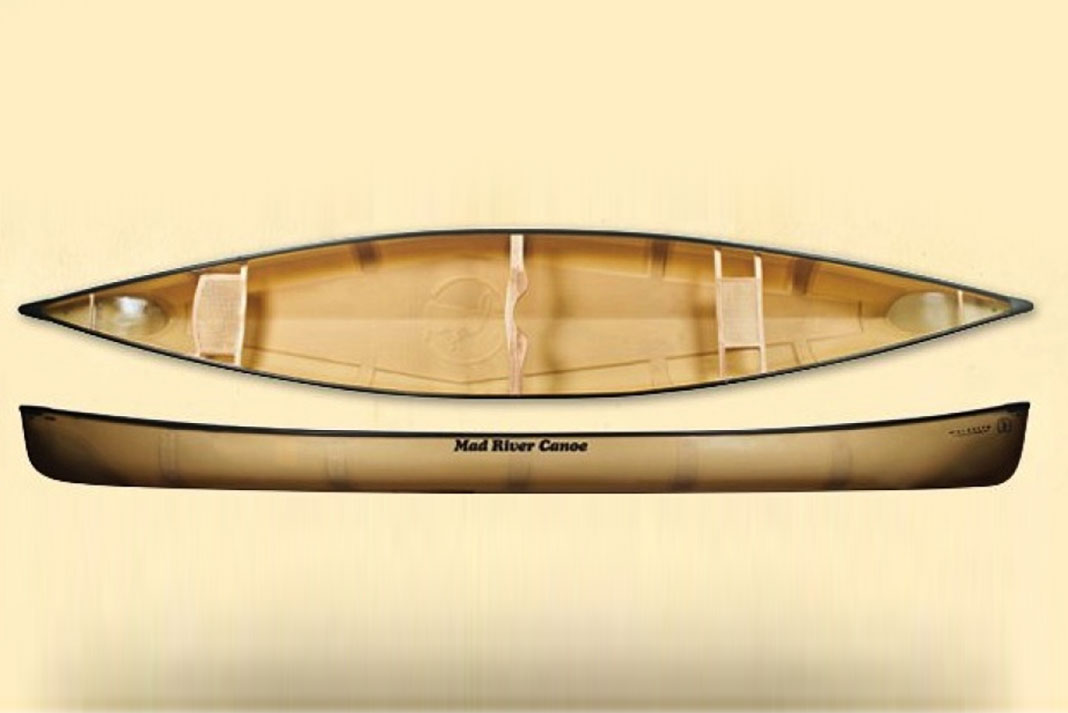This article offers tips and techniques for performing a high sculling brace from a kayak and was originally published in Adventure Kayak magazine.
Two points of stability allow you to balance more effectively than one. Sculling braces help you stay upright in tippy situations by acting as a second point of stability to your kayak. Practice the sculling brace by breaking it down into these three elements: body, boat and paddle.
Peer review
The scull should be about as long as
your cockpit with the blade just under the surface. Done properly, there should be very little aeration of the water. Your inward hand is just an anchor; it is your outward hand that does all the work changing the angle of the blade. » Michael Pardy, Paddle Canada level 3 instructor trainer, Victoria, BC
The angle of the blade will give more turn propulsion if it is closer to vertical, like a sweep, and more support if it is flatter to the water. This is useful for learning how flat an angle you want for a graceful sculling brace, and also how to put some support in your sweep stroke for confident edged turns in lumpy water. Blade angle is controlled by raising or lowering the elbow relative to the wrist, keeping the wrist neutral to prevent injury. » Ginni Callahan, ACA level 5 instructor and BCU level 4 coach, Cathlamet, WA
To be biomechanically friendlier as you edge further into the water, rotate your chest to the sky and roll the boat off your body, lessening the load on the paddle. This is similar to a Greenland static brace position. » Shawna Franklin & Leon Sommé, BCU level 4 coaches, Orcas Island, WA
I tend not to look at sculling for support as a stand-alone skill, instead it is a way to en- hance or add confidence to other skills and maneuvers. For example, when performing sweep strokes on the move, finishing a roll, or to perform braces on the move and prevent the blade diving. » Doug Cooper, BCU level 5 coach, Aviemore, Scotland
Body
For a high sculling brace, your elbows should be low with the paddle held horizontally near your shoulders. For a low sculling brace, your elbows should be high, directly over the paddle shaft, which is held horizontal above the cock- pit of your kayak. Use torso rotation to move your blade through the stroke.
Your lower body controls the position of your kayak. use your hips and knees to either hold your boat on edge, or to right the boat as with other bracing strokes.
Boat
Transferring some of your weight onto your sculling paddle will allow you to hold your boat on edge or recover from a near capsize on the sculling side. With a high sculling brace, your kayak can be held on almost any degree of edge, including nearly upside down.
Paddle
Skim your paddle back and forth across the water beside your kayak, maintaining pressure on the power face (high sculling brace), or the non-power face (low sculling brace). Keep the paddle on the surface by slightly lifting the leading edge of your blade.
To get a feel for this, swish your hand back and forth across the water, feeling the water pressure on your palm. As your thumb leads the way through the water, angle it slightly towards the sky. As your pinky leads, angle it towards the sky.
The transition points of the stroke—the points where you change your paddle’s direction of movement—offer little stability. There- fore, move the paddle at a slow to moderate pace and use longer strokes to reduce the number of transitions.
Sculling for Support
Use a high or low sculling brace to salvage a sloppy roll, to stabilize yourself when working your legs back into your kayak during a rodeo re-entry, or in any other situation where you need consistent extra stability.
Practice your sculling technique by moving your kayak in multiple directions using a sculling draw (sculling with a vertical paddle). Then bring the paddle back to horizontal and begin adding a little weight to the paddle as you scull back and forth. Finally, work on holding your boat further and further on edge while sculling for support. This gradual progression will help develop both your muscle memory and your confidence.
Meaghan Hennessy is a Paddle Canada Level 2 instructor trainer and BCU Level 3 sea coach based in Vancouver, British Columbia. She currently teaches for SKILS.
This article originally appeared in Adventure Kayak, Summer/Fall 2011. Download our freeiPad/iPhone/iPod Touch App or Android App or read it here.



